National flag
| Flag | Date | Use | Description |
|---|---|---|---|
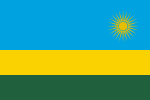 | 2001–present | Flag of Rwanda | A horizontal tricolour of light blue (double width), yellow and green; charged with a golden-yellow sun in the upper-fly side corner. [1] [2] [3] [4] [5] |
The following is a list of flags related with Rwanda.
| Flag | Date | Use | Description |
|---|---|---|---|
 | 2001–present | Flag of Rwanda | A horizontal tricolour of light blue (double width), yellow and green; charged with a golden-yellow sun in the upper-fly side corner. [1] [2] [3] [4] [5] |
| Flag | Date | Use | Description |
|---|---|---|---|
 | 2001–present | Presidential Flag of Rwanda | A white field with a golden border and the national seal in the center. [6] |
| Flag | Date | Use | Description |
|---|---|---|---|
 | ?–present | Flag of the Twa people | [7] |
| Flag | Date | Use | Description |
|---|---|---|---|
 | 1990–present | Flag of the Interahamwe | [8] [9] |
 | 1987–present | Flag of the Rwandan Patriotic Front | [10] |
 | 1975–1994 | Flag of the MRND | [11] |
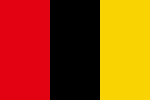 | 1992–1994 | Flag of the Coalition for the Defence of the Republic |
| Flag | Date | Use | Description |
|---|---|---|---|
 | 1962–2001 | Second flag of the Republic of Rwanda | A vertical Tricolour of Red, Yellow and Green with a black R letter in the center. [12] [13] |
 | 1959–1961 | First flag of the Republic of Rwanda | A vertical Tricolour of Red, Yellow and Green. [14] [15] |
 | 1926–1945 | First flag of the Belgian Congo | [16] |
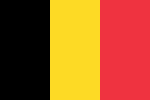 | 1916–1959 | Flag of the Kingdom of Belgium | [17] |
 | 1890–1916 | Flag of the German Empire | [18] |
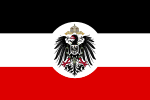 | 1890–1916 | German colonial flag | |
  | 1890–1916 | Flags of the German East Africa Company | [19] |
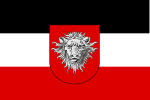 | 1914–1916 | Proposed flag for the German East Africa | [20] |

The national flag of Guinea was adopted on 10 November 1958, with the publication of the country's first Constitution.

The national flag of Rwanda is a horizontal tricolour of light blue, yellow, and green, in a 2:1:1 ratio, charged with a golden sun in the upper fly-side corner. It was adopted on 31 December 2001 and replaced the flag adopted shortly before independence. The design of the flag is defined in the Rwandan constitution and regulations regarding the use and manufacture of the flag are outlined in the country's national flag law.
Agathe Uwilingiyimana, sometimes known as Madame Agathe, was a Rwandan political figure. She served as Prime Minister of Rwanda from 18 July 1993 until her assassination on 7 April 1994, during the opening stages of the Rwandan genocide. She was also Rwanda's acting head of state in the hours leading up to her death.

"Rwanda Nziza" has been the national anthem of Rwanda since January 1, 2002. It replaced "Rwanda Rwacu", which was the original national anthem until the 1994 genocide against the Tutsis.

Androcide is a term for the hate crime of systematically killing males because of their sex. Not all murders of men are androcide. Androcides often happen during war or genocide. Men and boys are not always solely targeted because of abstract or ideological hatred. Rather, male civilians are often targeted during warfare as a way to remove those considered to be potential combatants, and during genocide as a way to destroy the entire community.
"Rwanda Rwacu" was the national anthem of Rwanda from 1962 to January 1, 2002, when it was replaced with "Rwanda Nziza".
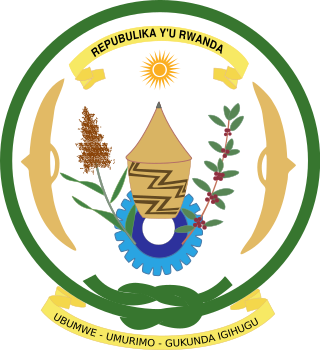
The Emblem of Rwanda is the national symbol and used by the Government of Rwanda. It was restyled in 2001 to match the color scheme of the new national flag. The text reads "Republic of Rwanda – Unity, Work, Patriotism" in Kinyarwanda. The central tribal devices, a stem of sorghum, a branch of a coffee tree and a traditional basket are surmounted on a cogwheel with the sun with its rays above, while two typical Rwandan shields protects them, one on the right and one on the left. They are encircled by a square knot.
Hutu Power is an ethnic supremacist ideology that asserts the ethnic superiority of Hutu, often in the context of being superior to Tutsi and Twa, and therefore, they are entitled to dominate and murder these two groups and other minorities. Espoused by Hutu extremists, widespread support for the ideology led to the 1994 Rwandan genocide against the Tutsi and the members of their families, the moderate Hutu who opposed the killings, and the Twa, who were considered traitors. Hutu Power political parties and movements included the Akazu, the Parmehutu, the Coalition for the Defence of the Republic and its Impuzamugambi paramilitary militia, and the governing National Republican Movement for Democracy and Development and its Interahamwe paramilitary militia. The belief in the theory that Hutu people are superior is most common in Rwanda and Burundi, where they make up the majority of the population. Due to its sheer destructiveness, the ideology has been compared to Nazism in the Western world.

Ntarama Genocide Memorial Centre is one of six genocide museums in Rwanda. Five thousand people were killed here in the Catholic church.

Veneranda Nzambazamariya was a Rwandan peace advocate, women’s rights leader, and humanitarian. She played a significant role in post-genocide Rwanda by uniting women across ethnic and social divides to support reconciliation and community rebuilding. As the president of Pro-Femmes/Twese Hamwe, Nzambazamariya emphasized local activism and gender inclusion in peacebuilding efforts.
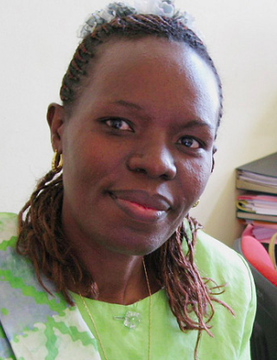
Judith Kanakuze was a Rwandan politician and women's rights activist best known for passing legislation against gender-based violence, including Rwanda's first legal definition of rape, and contributing constitutional gender quotas that required women's representation in governmental bodies. She worked in multiple fields, including nutrition and civil service, before becoming a prominent leader of women after the 1994 Rwandan genocide, in which she lost most of her extended family. Kanakuze founded the early women's organization Réseau des Femmes and represented women's interests at the Arusha Accords and on Rwanda's committee to establish a constitution. The gender quotas that required women to compose at least 30 percent of governmental bodies subsequently quickly spurred women's participation to exceed the quotas in parliament. She was elected to Parliament in 2003 and reelected in 2008. During her terms, she presided over the Rwanda Women Parliamentary Forum.